-
 Bitcoin
Bitcoin $104,993.4283
0.28% -
 Ethereum
Ethereum $2,528.3455
0.38% -
 Tether USDt
Tether USDt $1.0004
0.00% -
 XRP
XRP $2.1654
1.67% -
 BNB
BNB $650.0321
-0.46% -
 Solana
Solana $145.4708
0.92% -
 USDC
USDC $0.9999
0.01% -
 Dogecoin
Dogecoin $0.1766
1.54% -
 TRON
TRON $0.2690
-1.64% -
 Cardano
Cardano $0.6330
-0.13% -
 Hyperliquid
Hyperliquid $41.8103
4.09% -
 Sui
Sui $3.0125
0.07% -
 Chainlink
Chainlink $13.1242
-0.46% -
 Bitcoin Cash
Bitcoin Cash $432.2905
4.24% -
 UNUS SED LEO
UNUS SED LEO $9.0665
0.06% -
 Stellar
Stellar $0.2589
0.46% -
 Avalanche
Avalanche $19.0668
-0.17% -
 Toncoin
Toncoin $2.9965
1.32% -
 Shiba Inu
Shiba Inu $0.0...01213
3.99% -
 Hedera
Hedera $0.1589
3.70% -
 Litecoin
Litecoin $86.0587
3.16% -
 Polkadot
Polkadot $3.7846
-0.62% -
 Ethena USDe
Ethena USDe $1.0005
0.01% -
 Monero
Monero $312.9788
-0.41% -
 Dai
Dai $0.9999
0.02% -
 Bitget Token
Bitget Token $4.5283
-0.01% -
 Pepe
Pepe $0.0...01111
4.28% -
 Uniswap
Uniswap $7.2893
-0.18% -
 Pi
Pi $0.5825
5.40% -
 Aave
Aave $274.2888
-4.00%
Should Dogecoin be bought at the bottom or stop-loss after a sharp drop? How to formulate a response strategy?
When investing in volatile Dogecoin, consider buying at the bottom for potential high returns, but use stop-loss orders to manage risk and protect your investment.
Apr 29, 2025 at 11:00 am
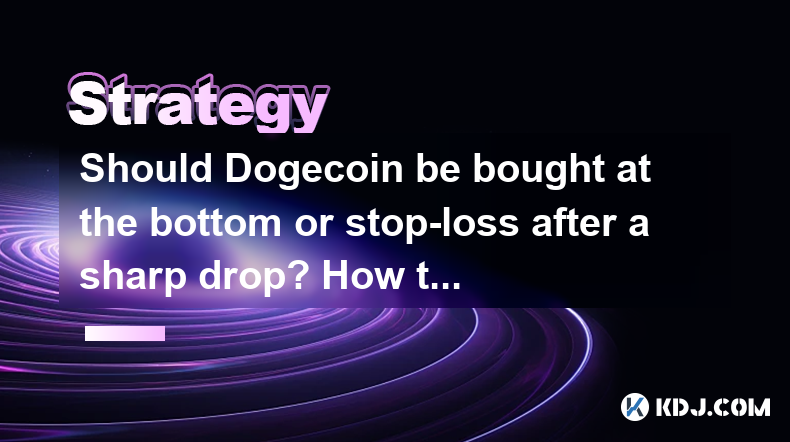
When it comes to navigating the volatile waters of cryptocurrency, particularly with a meme-based coin like Dogecoin, investors often find themselves at a crossroads: should they buy at the bottom or implement a stop-loss after a sharp drop? Formulating an effective response strategy requires a deep understanding of market dynamics, personal risk tolerance, and the unique characteristics of Dogecoin. Let's delve into the intricacies of these strategies and how to approach them.
Understanding Dogecoin's Market Behavior
Dogecoin, initially created as a joke, has evolved into a significant player in the cryptocurrency market, largely driven by social media hype and endorsements from high-profile figures. Its price can be extremely volatile, often experiencing sharp rises and falls within short periods. This volatility is a double-edged sword: it presents opportunities for high returns but also significant risks.
To understand whether to buy at the bottom or use a stop-loss, it's crucial to analyze Dogecoin's historical price movements. Historical data shows that Dogecoin has experienced multiple cycles of rapid growth followed by equally rapid declines. These cycles are often influenced by external factors such as celebrity endorsements, social media trends, and broader market sentiment.
Buying at the Bottom: Risks and Rewards
Buying at the bottom refers to purchasing Dogecoin when its price has significantly dropped, with the expectation that it will rebound. This strategy can be highly rewarding if timed correctly, as it allows investors to buy low and sell high. However, it comes with substantial risks, primarily because identifying the bottom of a price drop is challenging.
To attempt buying at the bottom, investors need to:
- Monitor market trends: Use technical analysis tools to identify potential support levels where the price might stabilize.
- Stay informed: Keep up with news and social media to understand the factors driving Dogecoin's price movements.
- Set a budget: Determine how much you are willing to invest, considering the high risk associated with trying to time the market.
Implementing a Stop-Loss: Protecting Your Investment
A stop-loss is an order placed with a broker to sell a security when it reaches a certain price, designed to limit an investor's loss on a position. For Dogecoin, setting a stop-loss can be a prudent strategy to protect against significant downturns.
To implement a stop-loss effectively, consider the following steps:
- Determine your risk tolerance: Decide on the maximum percentage of loss you are willing to accept.
- Set the stop-loss level: Based on your risk tolerance, set the stop-loss at a price that triggers a sale if the price drops to that level.
- Monitor and adjust: Regularly review your stop-loss orders and adjust them as necessary to reflect changes in market conditions or your investment strategy.
Formulating a Response Strategy
Formulating a response strategy for Dogecoin involves balancing the potential for high returns with the need to manage risk. Here are some key considerations:
- Diversify your portfolio: Don't put all your eggs in one basket. Investing in a variety of assets can help mitigate the risk associated with Dogecoin's volatility.
- Use a combination of strategies: Consider using both buying at the bottom and stop-loss strategies. For example, you might buy at what you believe is the bottom and then set a stop-loss to protect your investment.
- Stay disciplined: Stick to your strategy and avoid making impulsive decisions based on short-term market fluctuations.
Technical Analysis Tools for Dogecoin
Technical analysis can be a valuable tool for investors looking to buy at the bottom or set effective stop-losses. Some key tools include:
- Moving averages: These can help identify trends and potential reversal points.
- Relative Strength Index (RSI): This can indicate whether Dogecoin is overbought or oversold, helping to predict potential price movements.
- Support and resistance levels: Identifying these levels can help determine where the price might find a bottom or face significant resistance.
Psychological Factors in Dogecoin Trading
Trading Dogecoin, like any cryptocurrency, is not just about numbers and charts; it's also about psychology. Emotional discipline is crucial, as the fear of missing out (FOMO) or panic selling can lead to poor decision-making.
To maintain emotional discipline:
- Set clear goals: Know what you want to achieve with your Dogecoin investment and stick to your plan.
- Avoid herd mentality: Don't follow the crowd without doing your own research and analysis.
- Take breaks: Step away from the market periodically to avoid becoming overwhelmed by its volatility.
Practical Steps for Buying at the Bottom
If you decide to buy at the bottom, here are some practical steps to follow:
- Research: Use historical data and technical analysis to identify potential bottom points.
- Set alerts: Use trading platforms to set price alerts that notify you when Dogecoin reaches a certain level.
- Execute quickly: When you believe the bottom has been reached, act swiftly to buy before the price rebounds.
Practical Steps for Setting a Stop-Loss
Setting a stop-loss involves careful planning and execution. Here are the steps to follow:
- Choose a trading platform: Ensure your platform supports stop-loss orders.
- Calculate your stop-loss level: Based on your risk tolerance, calculate the price at which you want to sell.
- Place the order: Enter the stop-loss order into your trading platform, ensuring it is set correctly.
- Monitor and adjust: Regularly check your stop-loss orders and adjust them as needed to reflect changes in your strategy or market conditions.
Frequently Asked Questions
Q: How can I tell if Dogecoin has reached its bottom?
A: Identifying the bottom of Dogecoin's price drop is challenging and requires a combination of technical analysis, market sentiment analysis, and staying informed about external factors influencing the price. Look for signs such as increased buying volume at lower prices, positive news or endorsements, and technical indicators like the RSI showing oversold conditions.
Q: What percentage should I set for my stop-loss on Dogecoin?
A: The percentage for your stop-loss depends on your risk tolerance. A common range is between 5% to 15% below your purchase price. However, given Dogecoin's volatility, you might need to adjust this based on your comfort level with potential losses.
Q: Can I use both buying at the bottom and stop-loss strategies simultaneously?
A: Yes, you can use both strategies simultaneously. For example, you might buy Dogecoin at what you believe is the bottom and then set a stop-loss to protect your investment if the price continues to drop. This approach allows you to capitalize on potential rebounds while managing risk.
Q: How does social media influence Dogecoin's price, and should it affect my strategy?
A: Social media has a significant impact on Dogecoin's price, often driving rapid price movements based on trends and endorsements. While it's important to stay informed about social media sentiment, it should not be the sole basis for your strategy. Use it as one of many factors in your decision-making process, alongside technical analysis and market trends.
Disclaimer:info@kdj.com
The information provided is not trading advice. kdj.com does not assume any responsibility for any investments made based on the information provided in this article. Cryptocurrencies are highly volatile and it is highly recommended that you invest with caution after thorough research!
If you believe that the content used on this website infringes your copyright, please contact us immediately (info@kdj.com) and we will delete it promptly.
- Toncoin (TON) Trading Pattern Shows Signs of an Approaching Breakout
- 2025-06-14 18:47:10
- title: XRP Price Records a Notable Recovery
- 2025-06-14 18:40:12
- Chainlink (LINK) Co-founder: Global Banks Poised to Embrace Chainlink
- 2025-06-14 18:35:12
- Dogecoin (DOGE) Holders Reach Nearly 8 Million, Surpassing XRP and USDC
- 2025-06-14 18:35:12
- Are meme coins finally making room for AI-driven contenders?
- 2025-06-14 18:30:12
- Can Pi Network Bounce Back as Price Slips Below $0.65?
- 2025-06-14 18:30:12
Related knowledge

Cryptocurrency K-line chart technical analysis manual: Learn these methods to increase your chances of making a profit
Jun 11,2025 at 11:21pm
Understanding the Basics of K-line ChartsK-line charts, also known as candlestick charts, are one of the most widely used tools in cryptocurrency trading. Each K-line represents a specific time period and provides information about the open, high, low, and close prices during that interval. The body of the candle shows the relationship between the openi...
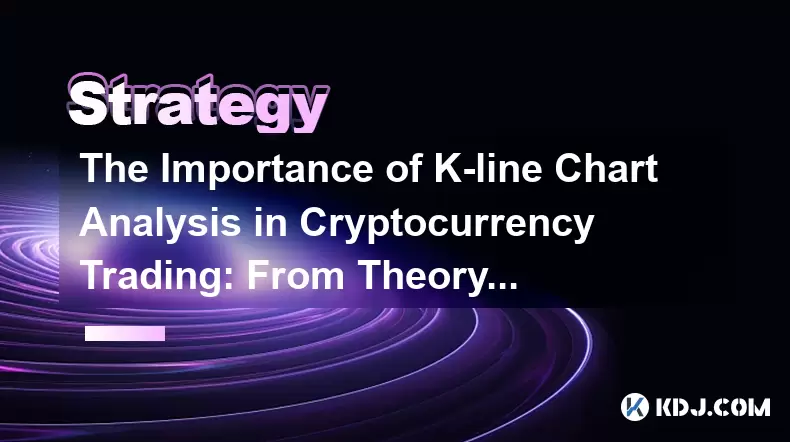
The Importance of K-line Chart Analysis in Cryptocurrency Trading: From Theory to Practical Cases
Jun 11,2025 at 04:56pm
Understanding the Basics of K-line ChartsK-line charts, also known as candlestick charts, are a visual representation of price movements over specific time intervals. Each K-line encapsulates four critical data points: the opening price, closing price, highest price, and lowest price within a given timeframe. These charts originated in Japan during the ...
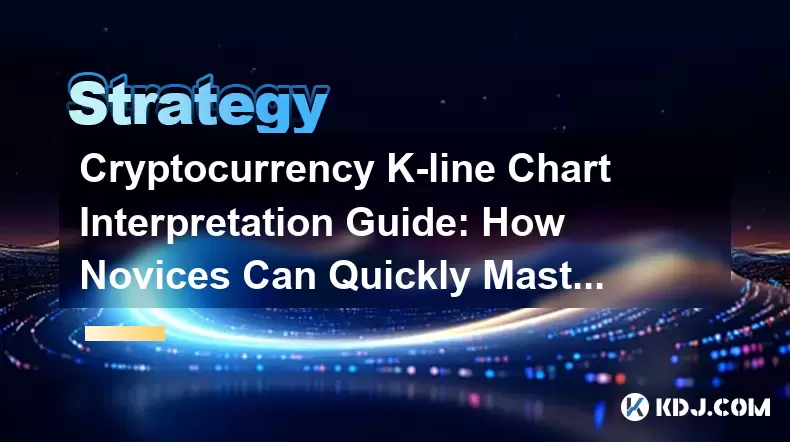
Cryptocurrency K-line Chart Interpretation Guide: How Novices Can Quickly Master the Basics of Technical Analysis
Jun 10,2025 at 08:56pm
Understanding the Basics of K-line ChartsK-line charts, also known as candlestick charts, are one of the most widely used tools in cryptocurrency trading for analyzing price movements. Each K-line represents a specific time period and shows the opening, closing, high, and low prices during that interval. For novices, grasping how to read these elements ...
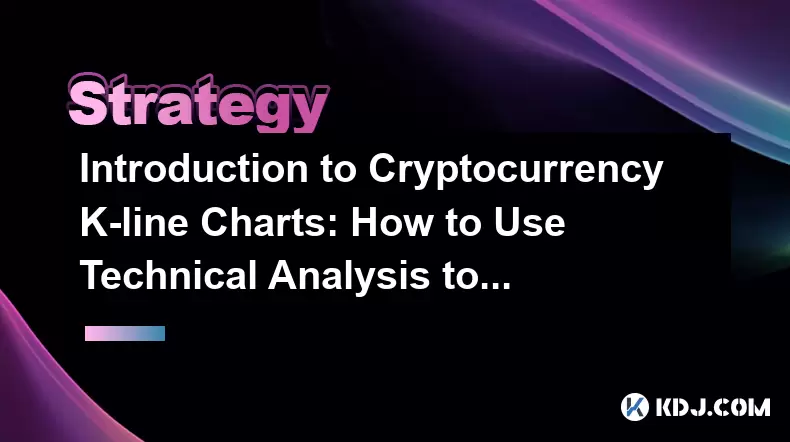
Introduction to Cryptocurrency K-line Charts: How to Use Technical Analysis to Optimize Trading Decisions
Jun 12,2025 at 03:56pm
Understanding the Basics of K-line ChartsK-line charts, also known as candlestick charts, are one of the most essential tools used in cryptocurrency trading. Originating from Japan, these charts visually represent price movements over specific time intervals. Each candlestick displays four key pieces of information: the opening price, closing price, hig...
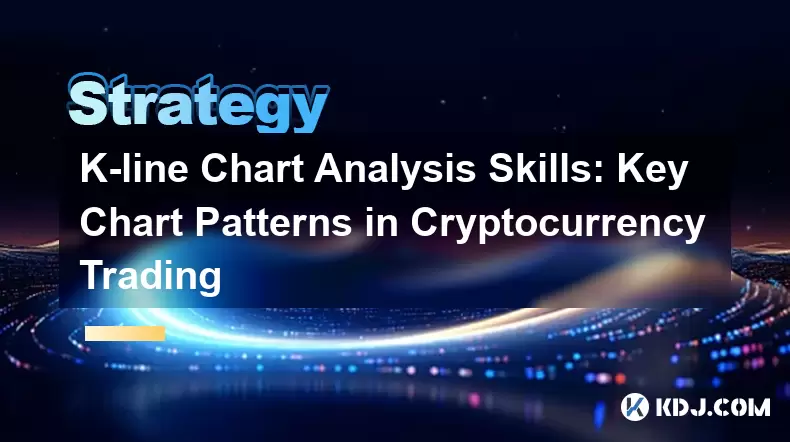
K-line Chart Analysis Skills: Key Chart Patterns in Cryptocurrency Trading
Jun 13,2025 at 10:21am
Understanding the Basics of K-line Charts in Cryptocurrency TradingK-line charts, also known as candlestick charts, are essential tools for analyzing price movements in cryptocurrency markets. Each candlestick represents a specific time frame and provides information about the open, high, low, and close (OHLC) prices during that period. In crypto tradin...
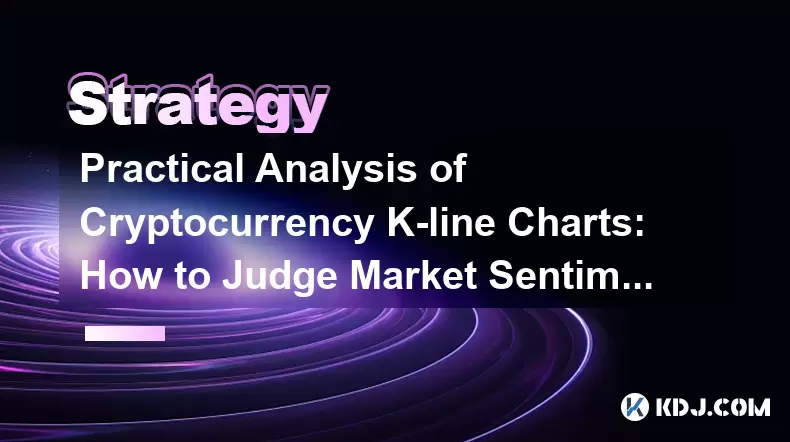
Practical Analysis of Cryptocurrency K-line Charts: How to Judge Market Sentiment through Charts
Jun 10,2025 at 09:42pm
Understanding the Basics of Cryptocurrency K-line ChartsCryptocurrency K-line charts, also known as candlestick charts, are essential tools for analyzing price movements in the crypto market. Each candlestick represents a specific time frame, such as 1 minute, 5 minutes, or even daily intervals. The structure of a K-line includes four key data points: o...

Cryptocurrency K-line chart technical analysis manual: Learn these methods to increase your chances of making a profit
Jun 11,2025 at 11:21pm
Understanding the Basics of K-line ChartsK-line charts, also known as candlestick charts, are one of the most widely used tools in cryptocurrency trading. Each K-line represents a specific time period and provides information about the open, high, low, and close prices during that interval. The body of the candle shows the relationship between the openi...

The Importance of K-line Chart Analysis in Cryptocurrency Trading: From Theory to Practical Cases
Jun 11,2025 at 04:56pm
Understanding the Basics of K-line ChartsK-line charts, also known as candlestick charts, are a visual representation of price movements over specific time intervals. Each K-line encapsulates four critical data points: the opening price, closing price, highest price, and lowest price within a given timeframe. These charts originated in Japan during the ...

Cryptocurrency K-line Chart Interpretation Guide: How Novices Can Quickly Master the Basics of Technical Analysis
Jun 10,2025 at 08:56pm
Understanding the Basics of K-line ChartsK-line charts, also known as candlestick charts, are one of the most widely used tools in cryptocurrency trading for analyzing price movements. Each K-line represents a specific time period and shows the opening, closing, high, and low prices during that interval. For novices, grasping how to read these elements ...

Introduction to Cryptocurrency K-line Charts: How to Use Technical Analysis to Optimize Trading Decisions
Jun 12,2025 at 03:56pm
Understanding the Basics of K-line ChartsK-line charts, also known as candlestick charts, are one of the most essential tools used in cryptocurrency trading. Originating from Japan, these charts visually represent price movements over specific time intervals. Each candlestick displays four key pieces of information: the opening price, closing price, hig...

K-line Chart Analysis Skills: Key Chart Patterns in Cryptocurrency Trading
Jun 13,2025 at 10:21am
Understanding the Basics of K-line Charts in Cryptocurrency TradingK-line charts, also known as candlestick charts, are essential tools for analyzing price movements in cryptocurrency markets. Each candlestick represents a specific time frame and provides information about the open, high, low, and close (OHLC) prices during that period. In crypto tradin...

Practical Analysis of Cryptocurrency K-line Charts: How to Judge Market Sentiment through Charts
Jun 10,2025 at 09:42pm
Understanding the Basics of Cryptocurrency K-line ChartsCryptocurrency K-line charts, also known as candlestick charts, are essential tools for analyzing price movements in the crypto market. Each candlestick represents a specific time frame, such as 1 minute, 5 minutes, or even daily intervals. The structure of a K-line includes four key data points: o...
See all articles

























































































